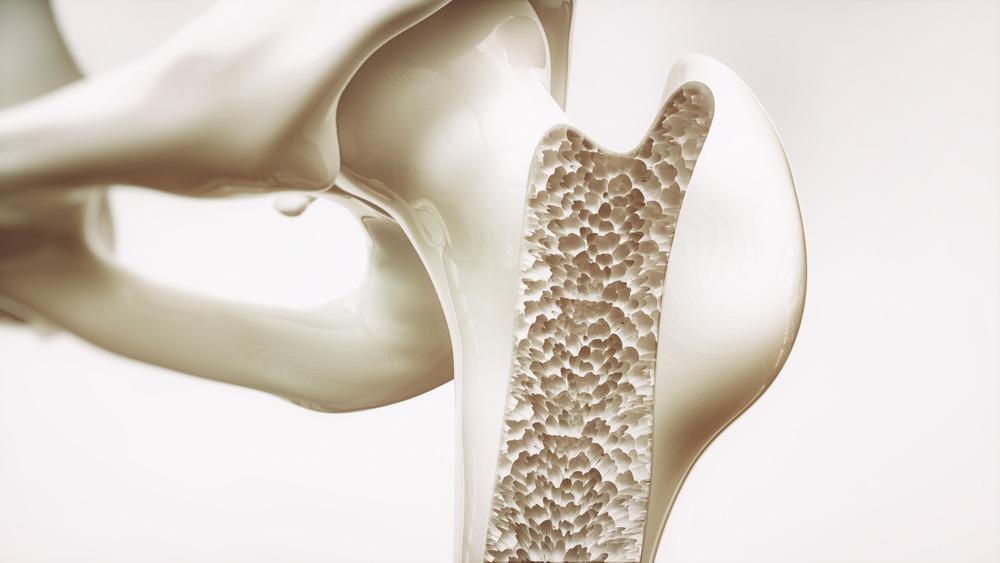Novel research involving the use of nanocomposite scaffolds supplied with ginger extract and curcumin has emerged for the field of bone tissue engineering through an article available as a journal pre-proof in Materials Today Communications.

Study: A Comparative in vitro and in vivo Study on Bone Tissue Engineering Potential of the Collagen/nano-Hydroxyapatite Scaffolds Loaded with Ginger Extract and Curcumin. Image Credit: Crevis/Shutterstock.com
Background Into Tissue Engineering
The field of tissue engineering is an exciting branch of regenerative medicine that aims to design biological substitutes for restoring, maintaining, improving and replacing the functions of tissues and organs.
Tissue engineering is dependent on the critical role of scaffolds; these are usually three-dimensional porous structures that provide support for cell attachment and tissue development.
However, a difficult challenge for tissue engineering is the similarity of tissue to native tissue found in the body, and this includes a lack of similarity to the extracellular matrix (ECM) such as having mismatched mechanical strength and high porosity.
The extracellular matrix found in native tissue is used as a scaffold for the cells and tissue growth, with this integral component providing the critical requirements for cellular behavior and functionality. The generation of a 3D scaffold structure that is able to mimic the extracellular matrix is important for tissue engineering when attempting to repair damaged tissues and organs.
Bone Tissue Engineering
Bone tissue engineering involves the generation of bone tissue that includes two-thirds bone of inorganic materials such as hydroxyapatite and one-third of organic material such as collagen.
The ECM is mainly composed of collagen, which is a useful structural protein that can provide biological and structural integrity to tissues and organs.
Collagen type 1 (COL1) is usually the most abundantly found and is used as a structural composition protein for bones, ligaments and tendons.
This protein can be useful when used within bone tissue engineering due to properties such as porous structure, low immunogenicity, permeability and biodegradability. However, this polymer lacks mechanical strength by itself and so would not be able to fulfill the criteria of a good scaffold singularly; this illustrates the benefit of combining two or more biomaterials in order to ensure the criteria for a strong scaffold for bone tissue engineering is achieved.
Hydroxyapatite (HA) would be a good component to combine with collagen, as has been used extensively for bone tissue engineering due to its strong osteoconductivity and lack of toxicity.
The use of these two components has been researched previously with some inflammatory reactions being found after subcutaneous implantation. To address and improve upon a scaffold with these components, researchers have investigated the use of anti-inflammatories, such as from medicinal plants.
The researchers of this study have investigated the use of curcumin (CUR) and ginger (GIN) for their anti-inflammatory and antioxidant effects. Curcumin is a naturally derived element from turmeric, known as Curcuma longa L, while ginger is a herbaceous perennial plant from Southern Asia.
Novel Research: Combining Anti-Inflammatories
Both these components have strong anti-inflammatory properties and have been used separately within tissue engineering research in combination with other scaffolding elements such as collagen and chitosan. Additionally, some in vitro studies have illustrated the potential of these anti-inflammatories with their ability to stimulate osteogenic differentiation from mesenchymal stem cells (MSCs) which is substantial for the advancement of bone tissue engineering.
The aim of this study, which combined the use of a collagen and hydroxyapatite nanocomposite scaffold with CUR and GIN, compared various proportions for an optimal composition of scaffolds using a freeze dryer method for bone tissue engineering. This consisted of evaluating the physical and biological properties through in vitro and in vivo experiments.
The results included both CUR and GIN demonstrating a porous 3D structure with increased efficiency for both sets of experiments, with a difference in mechanical strength, that showed CUR was able to increase the tensile strength of the nanocomposite scaffold, but the use of GIN slightly decreased this property. However, both these anti-inflammatory elements were able to increase osteogenesis within the scaffold for bone tissue engineering.
In vitro testing illustrated a lack of immunogenicity with MSCs derived from the synovial membrane of rats through the use of these anti-inflammatories and in vivo experimentation, through subcutaneous implantation of the nanocomposite scaffold into rat animal models for 12 weeks, showed a lower level of inflammation through this novel add-on.
The researchers found the optimum level of CUR for use within scaffolds intended for bone tissue engineering was at 10% with collagen and hydroxyapatite (COL-HA-CUR10%), while the optimum level of using GIN was found to be 5% (COL-HA-GIN5%).
The translation of this research for bone tissue engineering could be a steppingstone into advancing this field, as the use of curcumin and ginger as an anti-inflammatory could improve the immunogenicity of collagen and hydroxyapatite nanocomposite scaffolds.
Improving this can aid with increasing osteogenesis, critical for bone tissue engineering and further enhance research into the use of this adjuvant treatment for diseased tissue and organs.
Reference
Khodabandeh, Z., tanideh, N., Aslani, F., Jamhiri, I., Zare, S., Alizadeh, N., Safari, A., Farshidfar, N., Dara, M. and Zarei, M., (2022) A Comparative in vitro and in vivo Study on Bone Tissue Engineering Potential of the Collagen/nano-Hydroxyapatite Scaffolds Loaded with Ginger Extract and Curcumin. Materials Today Communications, p.103339. Available at: https://www.sciencedirect.com/science/article/pii/S2352492822002100
Further Reading
Chan, B. and Leong, K., (2008) Scaffolding in tissue engineering: general approaches and tissue-specific considerations. European Spine Journal, 17(S4), pp.467-479. Available at: https://doi.org/10.1007/s00586-008-0745-3
Disclaimer: The views expressed here are those of the author expressed in their private capacity and do not necessarily represent the views of AZoM.com Limited T/A AZoNetwork the owner and operator of this website. This disclaimer forms part of the Terms and conditions of use of this website.